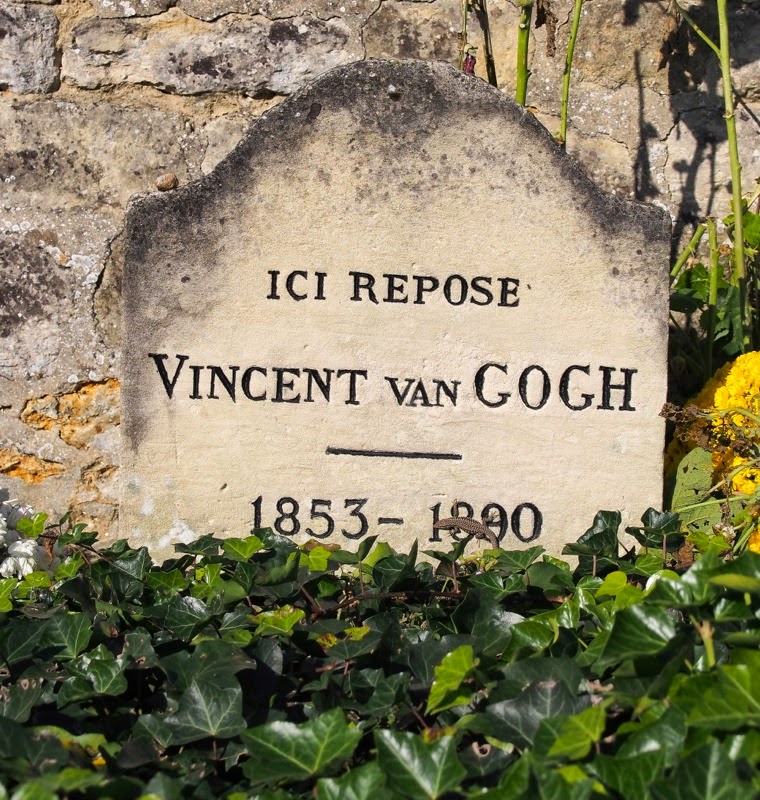 What?
What? The grave of Vincent van Gogh- and the village where he spent the last weeks of his life.
Why visit?
The painter equally famous for his paintings and his ear continues to draw large crowds in various museums in Paris and Amsterdam.
But few people know the painter died in a small village within arm's reach from the French capital.
And if you liked his paintings, you can still see the landscape and village, realising little has changed since Van Gogh saw them 125 years ago.
Where?
Auvers-sur-Oise, about 30km North-West of Paris proper. Map.
EVERY YEAR MILLIONS of people visit the Musee Orsay in Paris and the Van Gogh Museum in Amsterdam to see what are some of the most famous paintings in the world, painted by one of the most famous painters in the world.
Most of those people associate Van Gogh with the South of France: places like Arles, where he developed his unique style that seems to combine hallucinations with artistic vision. But few people know that Van Gogh actually died close to Paris, in a small village where he hoped (and failed) to find a cure for the bouts of mental illness that were tormenting him.
 |
| Much of Auvers is still picture-perfect cute. |
But on 27 July 1890 he was fatally wounded by a gun shot, either self-inflicted or a case of accidental homicide. Vincent's brother, Theo, who had been supporting his brother both emotionally and financially, rushed in from Paris but Vincent died in his arms.
 |
| Auberge Ravoux, where Van Gogh kicked the proverbial bucket. |
 |
| Together, forever. |
 |
| The painting is in Amsterdam, the landscape is still here. |
 |
| As seen in the Orsay. |
 |
| Corneille rubs shoulders with his more famous colleague. |
Auvers can be reached by car within 30-40 minutes from Paris or by SNCF-Transilien local train from Paris Gare du Nord in about an hour.
Useful links:
Auvers-sur-Oise Tourist Office


On a recent river cruise, I visited Arles and the hospital at St-Remy, but we were never told where Van Gogh was buried. I wonder, how near is Auvers to the town or hospital? I did not see the sites reproduced here, but there are similarly-sized and placed prints of his paintings on the lovely grounds of the still-practicing hospital.
ReplyDeleteHi Chris, as explained in the first few paragraphs, Auvers is about an hour North of Paris. St Remy and Arles are in Provence, almost the opposite side of France.
DeleteVan Gogh came to Auvers to be closer to Theo and for the treatment he was hoping to obtain from Dr Gachet.
Are you planning to visit Auvers?
I visited in December 2021. Auvers-sur-Oise was winter quiet, but still offered a delightful patisserie and pub. The church and cemetery were both an easy walk from town and the field with the forked path that Van Gogh painted with crows was remarkably unchanged from his time there. It made for a lovely day trip from Paris, one I would recommend to anyone who has the time to leave the city for an afternoon.
ReplyDeleteSounds like a lovely visit!
DeleteYes I have been there and walking through the cornfields with the cypress trees and crows uncannily brought his paintings to life.
ReplyDeleteWhat I remember of these priceless graves is that the people of Auvers planted a cypress next to each. These evergreens, so crucial to Vincent, are said never to grow/thrive beyond the olive groves (of Provence). However, they were healthy and evocative so far north on that lovely visit. It does not seem, in memory, a far walk from the Church Vincent painted, nor was Vincent's last field far from the center of town. I remember walking easily to most of his sites. My only regret was that our trip did not allow us to be there when the Auberge where Vincent died was open. But we could walk by it, stand near it. They also have reproductions of his work near the places that we feel we know so well. I also never believed that Vincent killed himself - because his final scene with the ripe wheat and the crows is so exuberant. That is not the painting of a man or woman who has given up on life. Auvers is a treasure, very walkable, a fine memory.
ReplyDelete